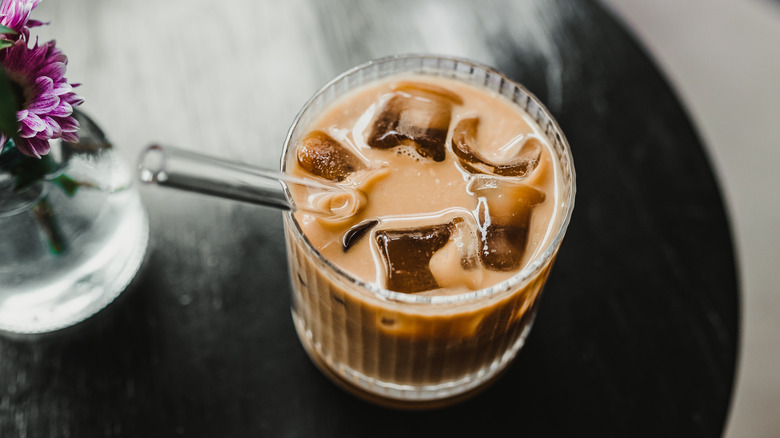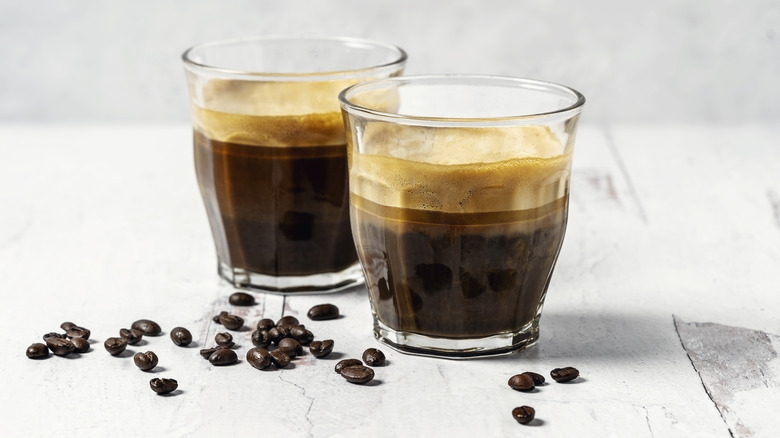The Mistake To Avoid When Making A True Iced Latte At Home
Maybe you're an unapologetic, self-professed "coffee snob." I'm a veteran barista with a lot of opinions. Together, we are in good company. It is with this platform that we embark on an exploration of iced lattes — namely, how to make them better — and if you aren't using actual fresh espresso shots to craft your iced lattes, you're cheating yourself of a quality beverage.
At a coffee shop that once employed me, store procedure was for baristas to pull as many fresh shots as possible during periods of slow traffic, then dump these shots into a large plastic gallon, which would be stored in the low fridge to chill. The thought here was that when rushes hit and patrons thwacked the store en masse ordering iced lattes, we would have a chilled gallon of espresso ready to pour and craft beverages without pulling fresh shots for every order. In theory, it was an exercise in proactivity, but it was a misguided one.
Using strongly-brewed drip coffee or chilled, bottled cold brew concentrate (which can be found in many grocery stores) to craft your homemade iced lattes yields a drink with one-dimensional flavor. Convenience is traded for the robust, bittersweet depth of espresso and its inimitable taste, the appeal of which is likely why you bothered flexing your home barista muscle at all. Fresh espresso is stronger, punchier, and makes an immediately palatable difference in the overall taste and quality of an iced latte, and coffee-lovers shouldn't have to compromise.
Homemade iced lattes call for fresh espresso shots
To make a knockout iced latte at home, fill a glass to the brim with ice, which will be necessary to chill the fresh hot shot. From there, all you'll need is milk and espresso (and a sweetener, if desired).
If making and savoring a homemade iced latte is part of your daily routine, then it might be worth it to invest in a countertop espresso machine appliance, like the De'Longhi Stilosa model ($99.95 via Best Buy). If you're more of a casual home barista, you might opt for a simpler stovetop espresso maker like the classic Italian Bialetti Moka Café pot ($29.99 via Target). To use both tools, opt for a bagged coffee that specifically indicates an "espresso" roast and ultra-fine grind, like Café Bustelo espresso or Starbucks Espresso Roast. Or, if you happen to live near a local coffee shop, you could simply take a walk and purchase a fresh espresso shot to-go (which is exactly what I did when making the viral parmesan espresso martini).
Once you've pulled or secured your espresso shots, add 'em to the ice-filled glass and top with milk, stirring to combine. Alternatively, some folks prefer to pour their espresso on top of the milk for a color-blocked, layered presentation with a foamy crema cap. The choice is yours. Industry standard for 12-16 ounce iced lattes is two full shots of espresso; eight-ounce lattes are typically made with one shot.

